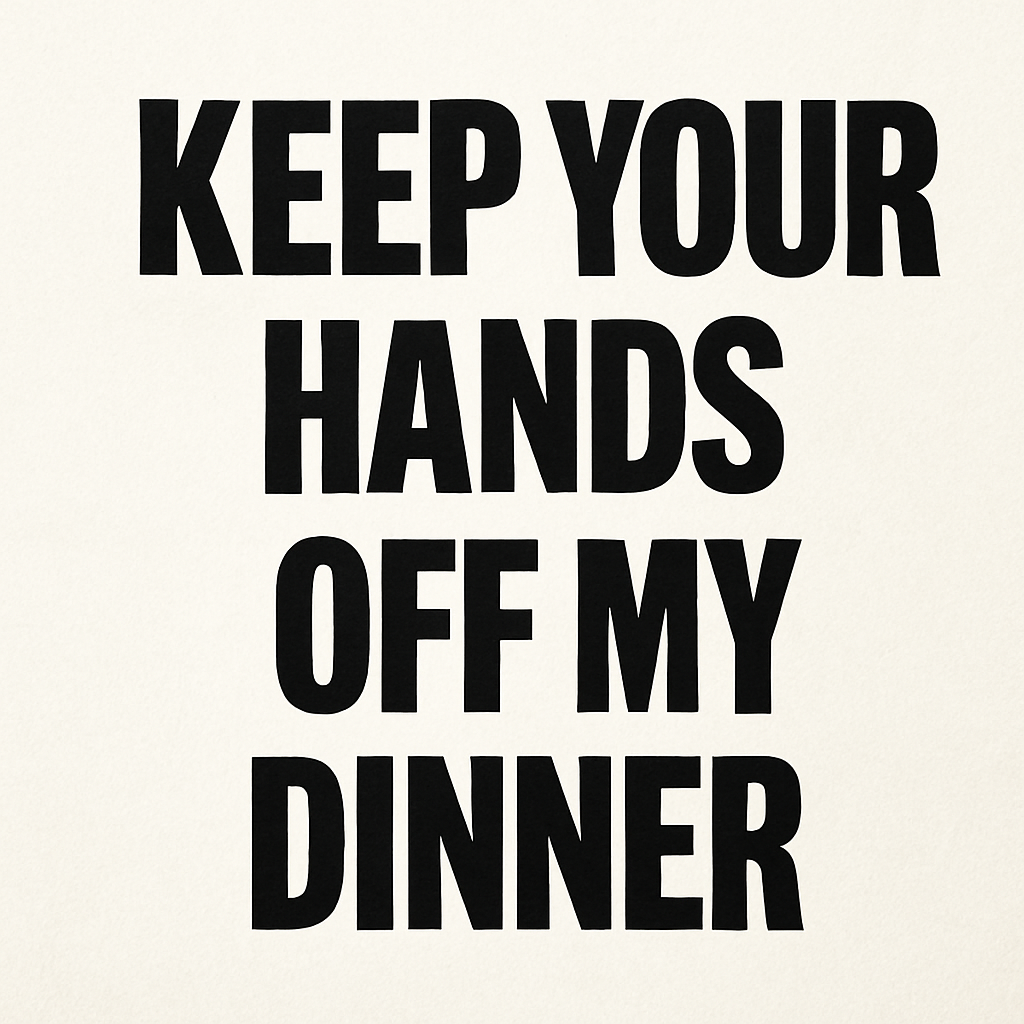Keep Your Hands Off My Dinner

There’s a certain kind of menu language that feels more like a boundary violation than a description.
You’re reading about a dish — maybe it’s crudo, or a tartare — and the text tells you it was “gently pressed by hand.” Or “crushed with the warmth of the chef’s palm.” Maybe the plate arrives and your server beams proudly: “Everything here is touched by the chef’s hands.”
That’s when you start to lose your appetite.
It’s not that we’re opposed to handmade food. Obviously, cooking is manual work. Chefs touch things. That’s fine — expected, even. But somewhere along the line, “hands” stopped being just part of the process and started becoming the marketing. A performance. A fetish.
The current wave of food language wants you to picture those hands. Wants you to feel them. Wants you to think of the fingertips shaping that quenelle, the palm flattening that tartare, the wrists folding that emulsion into existence. There’s an unspoken belief that the more human contact a dish has, the more it matters. But does it?
Because here’s the thing: when I’m eating, I don’t want to think about someone else’s body.
Not their fingerprints on my scallop, not the back of their knuckle brushing the rim of the plate, not the “soul” of the dish transmitted through the touch of their hands. I want to taste something great, not feel like I’m in an episode of Chef’s OnlyFans.
There was a time when “handmade” meant care. Now, it’s just code for “we want credit for touching this.”
So maybe we retire the hands talk. Not the craft — just the performance of it.
